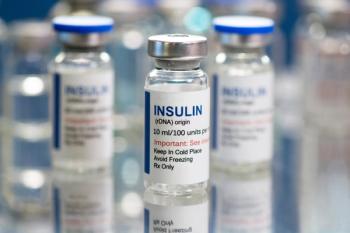
An Active Shooter Event at a Health Care Facility Is Unlikely, but Be Prepared
Health care facilities are not immune from active shooter incidents, and pharmacists in these workplaces need to know how to respond, according to a session at the ASHP (American Society of Health-System Pharmacists) 54th Midyear Clinical Meeting & Exhibition in Las Vegas, Nevada.
Health care facilities are not immune from active shooter incidents, and pharmacists in these workplaces need to know how to respond, according to a session at the ASHP (American Society of Health-System Pharmacists) 54th Midyear Clinical Meeting & Exhibition in Las Vegas, Nevada.
“Active shooter incidents are on the rise in our nation, and they continue to increase,” said Allison Naso, PharmD, MBA, BCPS, director of pharmacy at Cleveland Clinic Medina Hospital in Medina, Ohio, at the session “Code Silver: Are You Prepared for an Active Shooter?”
She cited statistics from the FBI showing that there were active shooter incidents in 42 states and the District of Columbia between 2000 and 2017. Four percent of these, or 10 incidents, occurred in health care facilities, with 2 additional incidents in 2018.
One incident at Mercy Hospital and Medical Center in Chicago, Illinois, on November 19, 2018, claimed 4 lives: an attending physician at the hospital, a police officer, a pharmacy resident, and the perpetrator.
The session’s co-presenter, Michael Long, MA, a police sergeant at the Cleveland Clinic Police Department in Cleveland, Ohio, said that the motives could be “endless” in a health care facility, including a workplace issue, a terminal illness, a prisoner escaping, and mental health problems.
Knowing what to do in an active shooter situation can save lives, he said.
Long discussed the principles of active shooter training from the ALICE Training Institute. The acronym stands for alert, lockdown, inform, counter, and evacuate.
Alert means, “we want to provide police dispatch as soon as possible” Long said, and also get in touch with the hospital operator to put a lockdown in place and pull resources together to get as much information as quickly as possible in real time.
Plain and simple language and not code words should be used to convey the message as directly as possible.
Lockdown can be barricading in place, using belts, handles, and “every resource in sight,” Long said.
If, for instance, people were in a public bathroom, he said they might use a garbage can or lie on the floor with their feet against the door.
“Can the shooter shoot through a door? Typically, they don’t,” Long said. “I’m doing something that increases my chance of survival.”
Long urged attendees to start looking at door handles, what kinds of locks are on the doors, and exit routes in their workplaces.
Inform is via an alert system but also through emails and texts.
“When you barricade in place, we want you silencing your cell phones, but we also want you texting your co-workers,” Long said.
This includes contacting workers set to arrive for shifts and vendors, who should be alerted to steer clear.
What if an active shooter is in close proximity and barricading in place is not an option?
Long said that this is where counter comes in, when people essentially fight back.
In previous active shooter situations, pretending to be dead or doing nothing has cost many people their lives, but working together to throw the shooter off balance often works, he said.
Throwing things, making noise, and running in a zig zag, are all effective ways to confuse and distract the perpetrator.
Finally, evacuate if and when it is safe to do so.
Naso has first-hand experience. There was an active shooter threat at the Cleveland Clinic Medina Hospital on November 13, 2018.
Clinic police and the hospital operator were contacted. An alert went out saying that there was an active shooter, to use ALICE precautions, and that it was not a drill.
About 150 members of law enforcement descended on the hospital campus within 2 hours. They cleared the medical office building and then the hospital. It turned out to be a false report.
Although the situation was scary, Naso said debriefings showed that “some things were done well, and some were not.”
Her group barricaded in place in a second-floor office, which proved to be a good choice, as the windows in the office could have provided an escape route to a second-floor roof.
“Know your workplace lockdown plan, and have a primary and secondary location, if possible,” Naso said. “Don’t choose a place that’s a dead end.”
In addition, Naso suggested asking “questions about where cameras are located, and how badge swipes work.”
The hospital learned many other lessons from the false alarm.
For one thing, “there is so much misinformation that comes out in a situation like this. One social media report said that shots were fired in our emergency department,” Naso said.
“Unless the information is coming from within your organization, you cannot rely on it for being true and correct,” she said
In addition, 2 pharmacy students who were with patients “did everything right” in terms of protecting patients and locking down with them, Naso said.
But no one had the students’ contact information, and they did not have contact information of members of the pharmacy team. This issue has since been remedied.
In addition, “think about if there were a lockdown or a situation where the pharmacy was completely locked down; how would you care continue for patients?” Naso asked.
Consider remote access, order verification queues, and automated dispensing cabinets to ensure the delivery of essential medications, she said.
REFERENCE
Naso A, Long M. Code silver: are you prepared for an active shooter? Presented at: American Society of Health-System Pharmacists 54th Midyear Clinical Meeting and Exhibition; Las Vegas, Nevada: December 10, 2019.
Newsletter
Stay informed on drug updates, treatment guidelines, and pharmacy practice trends—subscribe to Pharmacy Times for weekly clinical insights.







































































































































































































